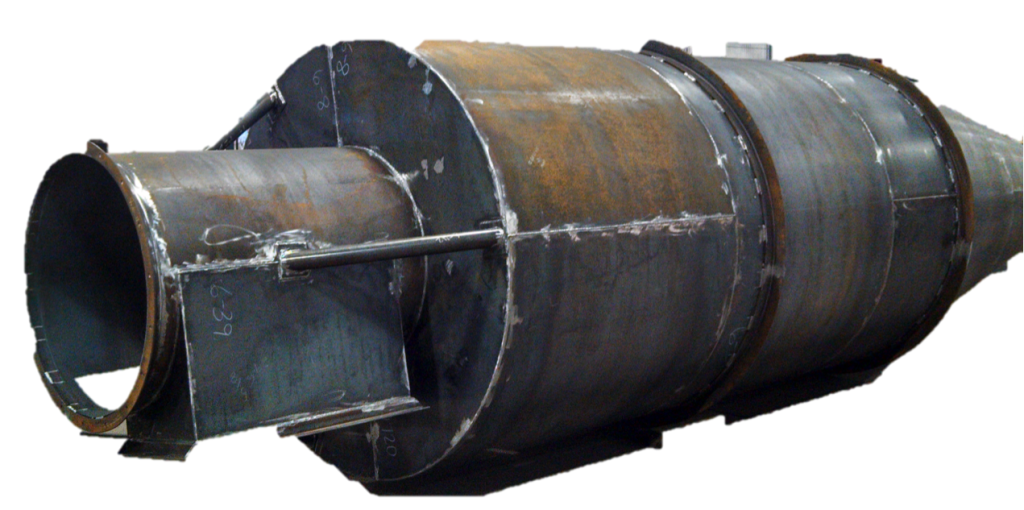Repair or Replace? Our Recommendations for a 12-Year-Old Cyclone
 When it comes to evaluating aging or depreciated heat processing equipment, the “repair or replace” conversation is common. “Can we squeeze more life out of it? Or should we bite the bullet and incur the capital cost?”
When it comes to evaluating aging or depreciated heat processing equipment, the “repair or replace” conversation is common. “Can we squeeze more life out of it? Or should we bite the bullet and incur the capital cost?”
Sometimes it’s a cut-and-dried decision, and sometimes it’s not so clear. The following case study is a good example of the evaluation process we use when making the repair/replace decision.
The Situation
Recently, we worked with an OEM and end-use customer to help them make the right determination for their 12-year old cyclone that handled silica sand.
Installed in 2003, the cyclone was used to separate the heavies of the material to keep them from entering the baghouse. The cyclone had lived out its lifespan, but in today’s hyper-competitive manufacturing market, it’s common to explore the “repair” option first.
Decision Criteria
Since repairs almost always have a lower up-front cost, we evaluated seven key elements to determine the right course.
Here’s the criteria:
- Downtime
The customer had 3 days scheduled. - Repair / Labor Costs
The labor and materials cost for the repair vs. replacement work were almost identical. The work consisted of both mechanical and refractory work. - Capital Costs
The cost of a new cyclone was approximately $40,000. - Lifespan
The cyclone had lived out its lifespan. - Work Time
Repairs would take 2 weeks. Installation of a new unit would take 2-3 days. - Lost Production
If the facility extended downtown longer than 3 days, we estimated that they’d lose approximately $50,000 per day of production revenue. - Performance
A new unit was guaranteed to run at 95% to 100% capacity. The repair work would extend the lifespan of the old unit, but the performance would continue to wane and eventually more repairs would be needed, causing further downtime.
When we factored in the cost of the lost production and the uncertainty of the capacity, the decision to spend $40,000 in capital costs to run at 95-100% capacity with no additional downtime was a no-brainer. Our customer agreed.
Job Challenges
After our initial site visit, it was clear that getting the cyclone into place would be a challenge. We were required to lift a 30,000-pound piece of equipment, swing it over 100 feet (to clear a conveyor system on the floor) and place it into a tricky alignment with expansion joints.
To minimize risk, we brought in an experienced crane contractor to perform a site-lift survey. This showed us every aspect of the lift in a format that was easy to evaluate. We took site measurements and verified clearances to plan every detail beforehand.
The job required a 40-ton crane to lift the cyclone off the truck, and then a 140-ton crane to move the cyclone 100 feet over the conveyor system and set it in place. The expansion joints weren’t lined up, so some site modifications were needed as well.
Once the unit was in place, we’d need to replace the alumina tiles inside the unit and replace the inlet duct tile and the flanged section tiles.
Results
We were able to complete the job in 2.5 days (a half day ahead of schedule) and on budget. We achieved 100% customer satisfaction from both the end-user and the OEM.
In looking back at the project, the key to success was the upfront planning. We took the time to crunch the numbers and made the best total economic decision for the customer. And the detailed site-lift survey by the crane contractor was critical to us completing the job on schedule.
Proper planning is essential to achieving good results.
Comments are closed.

